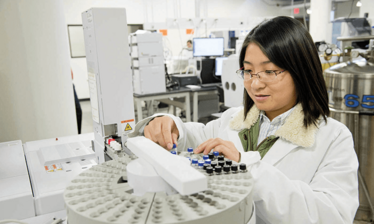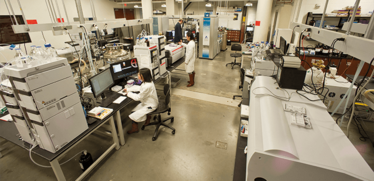Into the Cannabinome
An interview with Kevin A Schug, Professor and Shimadzu Distinguished Professor of Analytical Chemistry at the University of Texas in Arlington, USA.
The driving focus of my lab is to develop methods that enable the use of new technologies to address challenging problems. Recently, we have had significant success in the environmental sector, looking at the potential impact of unconventional oil and gas extraction (including hydraulic fracturing – ‘fracking’), and developing methods more suitable for large-scale analysis of air, water and soil. We don’t just want to use routine methods, but create novel methods that provide new information.
Zacariah Hildenbrand works closely with us on some of our environmental analysis work, and was also the Chief Scientific Officer of C4 Labs, a cannabis analysis lab in Arizona. Through Zac, we have developed a partnership with C4 labs – the Cannabinomics Collaborative – with a planned research lab in Oregon. The goal is not just to run a cannabis testing lab, but to advance a research agenda for cannabis, using our experience and advanced instrumentation.

It’s an interesting project for us on several levels. Cannabis attracts a lot of interest, and has some very interesting challenges and opportunities for analytical chemists. We like working with complex matrices, which give us the ability to evaluate new sample preparation and analysis techniques. We have done some natural product discovery before, looking for new antibacterial compounds in marine organisms, so this seemed a natural progression.
There are around 85 known cannabinoids, many of which haven’t been studied to a significant degree. Then there are hundreds of terpenes, which help give cannabis its flavor and fragrance. Terpenes are thought to work synergistically with the cannabinoids to elicit a wide range of therapeutic responses; from the reduction of inflammation and the regulation of blood glucose, to the protection of neurons and gastric cells. Again, many of the putative terpenes have yet to be fully characterized. The breadth of those classes, the potential for synergistic effects, and the different growing conditions and genetic factors growers use to enhance and promote the presence of these compounds, all make for a rich field to explore.
We’re developing methods for discovery and quantitative analysis of cannabinoids, terpenes and other compounds of interest, such as pesticides. There are a lot of people out there looking for the next new bioactive cannabinoid, but we believe we have some unique approaches. We have access to a lot of state-of-the-art instrumentation through our partnership with Shimadzu, plus we have vacuum ultraviolet absorption detectors from VUV Analytics. Vacuum ultraviolet detectors and high-end mass spectrometers allow us to focus on low-level signatures consistent with cannabinoids, while triple-quadrupole gas chromatography-mass spectrometry (GC-MS) systems offer additional specificity in targeted, quantitative analysis of both terpenes and cannabinoids. Online supercritical fluid extraction-supercritical fluid chromatography-mass spectrometry systems can, in principle, analyze all the compounds we’re interested in direct from plant matter, with minimal sample preparation. Many of these techniques aren’t yet mainstream in cannabis analysis, and we hope to have some promising results ready for publication soon.

The Shimadzu Center for Advanced Analytical Chemistry, University of Texas at Arlington.
Unconventional oil and gas is a pretty polarising topic. We strive to remain objective and neutral, but that means we don’t get too many Christmas cards in the mail from people on either side of the debate! In comparison, our work on cannabis is fairly uncontroversial, in that the general sentiment is that cannabis represents an exciting new frontier of medicine. That said, Texas is not the most progressive state in this regard, and to date we haven’t been able to work with actual cannabis plants at all. Instead, we’ve been ‘spiking’ matrix from hop plants (a relative of cannabis) with cannabinoids to simulate the type of interference we might find in actual cannabis plants, using DEA-exempt standards.
We’re pursuing DEA-approved avenues to get access to cannabis for the research, but it’s a long process, so we’re also looking at sending a team member over to the Oregon lab once it’s set up. It’s frustrating that we have the ability to contribute a lot of new data to a topic with important health implications, but we’re being held back by regulation.
I am naïve when it comes to hard-core genetics, but it’s exciting to see our knowledge of the cannabis genome grow. There’s a clear path for translation of research – from genetics, to the chemical analyses we’re working on, to bioactivity assays. Plus, findings from each area of study will feedback into the others, creating a circle of discovery.












